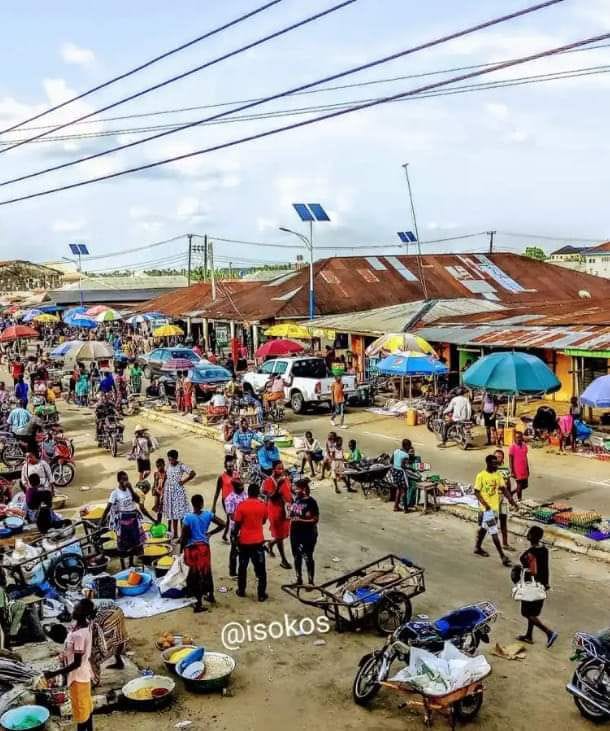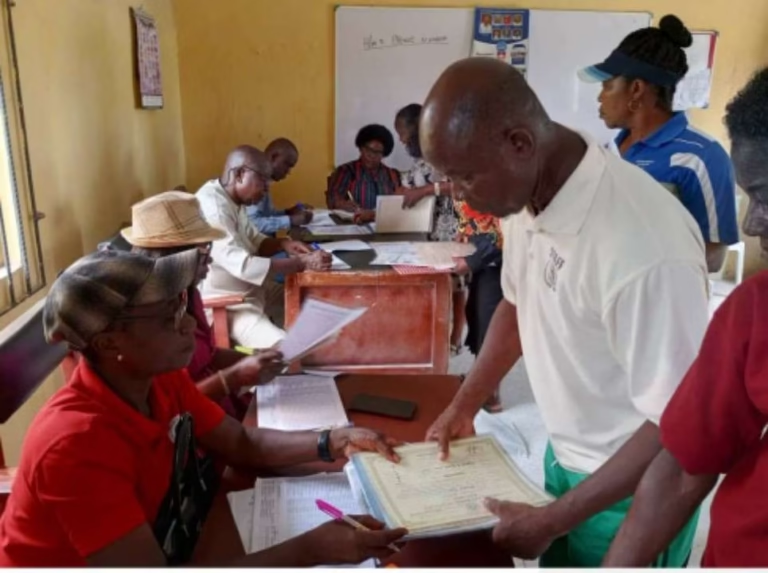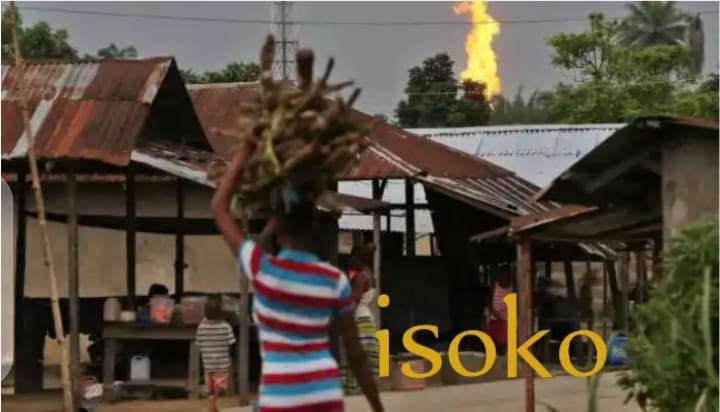According to folklore, Oleh Kingdom was founded by three men. They were not of the same ancestry and moved from Benin at different times during the 1500s. Oleh was initially referred to as “The Owhawho Forest of Animals.”
It was later shortened to “owha eran” and then later changed to Owhara. Oleh was given the nickname because it means to chase, cut, or repel an invasion. The name was thought to be more appropriate because the community’s founders were well-known for their ability to successfully defend themselves against anyone who dared to intrude on their territory.
The Pioneers Of The Oleh Community
The pioneers were said to be a mix of three tribes that fled the medieval Benin Empire in the 1500s due to the harsh reign of the then rulers, according to Charity Onomosofa’s article “The Socio-Political Organization of Oleh in the Pre-Colonial Era”.
Given that the majority of the journeys were most likely along river channels, fishermen amongst them resided along the banks of rivers and creeks while those who were Craftsmen and agricultural farmers relocated to drier land.
It may be argued that today’s Oleh, Irri, and Oyede are at the heart of Isoko Land.
This would imply that when our land was discovered, and the entire isoko was one gigantic forest, Oleh was most likely in the center of the forest, surrounded by many wild animals.
Because penetrating the heart of any forest demands guts, it was thought that the founding fathers used bush fires to pave routes into the seemingly impenetrable forest.
Emore and his brothers were great hunters who conquered Owhawo Erhan (the forest of animals), which was later renamed Oleh.
Other variations To “The Founding of Oleh Community” by Chief M.U.O Ozeze
A former Osogba of Oleh kingdom, asserted that one of the pioneers known as Omore (Emore) was blood related with Uzee (Uzere pioneer) and Omo-Ode (Irri founder).
Chief Ozeze’s account of Oleh origin claims that Omo-ode and Omore were brothers.
During the exodus from Benin, Omore (Emore), a hunter, decided to reside at Oleh, where there were animals.
When Emore hunted huge animals, such as leopards, he normally sent the head to his older brother Omo-Ode, who took it to the larger clan – Uzere, as was customary.
Instead of Omo-Ode upholding his junior brother as the hunter, he would claim to be the one who did the killing. When Omore discovered he had been duped by his brother. He subsequently exacted vengeance by murdering Omo-Ode’s children.
The Irri Clan
The Irri clan has a somewhat different storyline. According to them, while the two brothers lived in Irri. Omo-ode slew a leopard. The hide and head of the leopard were to be taken to the elders at their main town in Uzere, according to custom.
When a wild beast was killed, the hunter was customarily honored with the esteemed Ogbu title. The individual was then automatically recognized as a warlord.
Because Emore was a respectful younger brother, he gave the skin and head to his elder brother Omo-ode to deliver to their father, Uzere.
Omo-ode’s deception against Omore, his younger brother, which resulted in the murder of Omo-ode’s children, drives Omore into self-exile. The locals then yelled ‘aleh, aleh’ as he left Irri, which means “drive him” or “pursue him.”
It is popularly assumed in Irri that the willful mispronunciation of the term aleh is the origin of the name Oleh, which was given to the town Omore founded.
While he was at Oleh, the other founding members joined – Emiye and Odoro. The three founders stayed together in what is now known as Ibiegbe Quarter.
They were all competent hunters who had presumably recognized the importance of banding together as a result of a number of events from their previous attempts to carve out territories.
Even though Emore was not the eldest of the trio, he was treated as so since he was regarded as having laid the groundwork for the community.
After The Founding Of Oleh
At the time, the emblem of territorial sovereignty was not the planting of a flag or banner, but rather the planting of a tree known as Oyise.
When a founder discovered new land, he planted the tree and was recognized as the proprietor of that territory for the rest of his life.
Emiye and Odoro preferred to go a step further after claiming possession of the land to establish their own regions. Emiye’s Oyise was planted in Egide, whereas Odoro’s was planted in Edhubi.
The names of the founders can now be seen on 3 major highways in Oleh as well as prominent schools.
Emore Road runs through the town’s center, while Emiye Road runs west. Odoro is a road that leads east.
The schools are not overlooked, with names such as Emore Grammar School, Emiye Girls Grammar School, and Odoro Primary School.
Oleh Festival
It is also thought that the trio originated in Oliha, Benin. They also presented their deity, Oliho, whose name has been distorted to Olihor.
They participated in the celebration of Olihor, which is the festival of war, to maintain old traditions. It is celebrated every three years, and the Okporho part of town is expected to clear and cleanse the town with songs before the event.
A bull transported from Okpe was usually maintained at the oliho shrine in Okporho.
According to Moses Lion, a descendent of the Oliho deity’s founder, Umuzi, whose only child Oviobo became the deity’s top priest, Oliho worship was created at Okporho, where the deity dwelt at Oleh.
The oliho deity, originally a man, married the female divinity from Okpe-Isoko. The deity frequently goes to Okpe-Isoko to rest, and when the time comes to honor it, people must go and conduct the rites of calling him from Okpe-Isoko.
The bull fight is a feature of the ritual. When it was time to slaughter the bull, men were invited to attack it. Whoever was powerful enough to take the bull became a warlord.
The Oleh Administration
The Oleh’s administration is aligned with and influenced by the Odiologbo republicans. The Odiologbo title is akin to kingship and is rotated amongst the founding fathers’ royal households.
The Oletu-mode is the festival’s war leader as well as the head of the Olihor feast.
This position is mostly zoned to the Uzokpa quarter and can only be rotated between three streets within this quarter: Ekrogha, Iyedho, and Iyemede.
Another position that has been rotated is that of the Osogba. It travels between Oleh’s three main districts: Uzokpa, Eviewho, and Okogre.
Atawhe Ibiegbe’s sub-quarters fall under these areas. So does Enuru, as well as Ukolobi. Oleh Kingdomis made up of these seven quarters.
In Conclusion
Oleh Kingdom did not develop in solitude. Connection was made with Irri, Uzere, and Okpe during its expansion, and its inclusion as a member of the federated clans is widely documented.
The capacity of the Emore, Odoro, and Emiye to work together amicably demonstrates that each of these founders had obstacles that drove them to unite.
However, if the Owhara theory is correct, Emore’s ordeal at the hands of his brother may have influenced his actions. It could have led him to regard most humans as crafty, leading him to hunt them out of his region
It’s also likely that Emiye and Odoro didn’t oppose Emore when he planted the oyise to claim possession of the property since they recognized how he thought. Instead, they advanced in their efforts to build their own territories. The prime location of these fathers at the posts bordering (left: The Irri axis, Olomoto axis, and Ozoro axis) was the culmination of their alliance
Based on the information offered, we can conclude that Omore’s addition to the federation is contingent on him being Uzere’s child
At the time, Uzere was a powerful clan with ties to Aviara, Erohwa, and other clans. As a result, their acceptance was automatic, rather than something they had to wheedle for.
We do not guarantee 100% correctness of this findings and stand to be corrected.
Any Arguments, Contributions, Additions and Corrections are welcome in the Comments Section below.
Source
This Article Was Researched and Written by Comr. Jephthah O. Johnson, therefore, All Credits goes to him.







